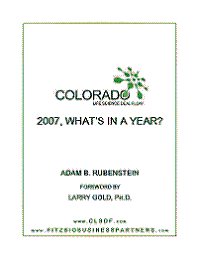
On the lookout for some news whilst perusing the 100+ page Form 10-K annual report filed by Replidyne (NASDAQ: RDYN) with the SEC on Friday I found the information provided on the regulatory process to be just a fantastic overview. So with some minor tweaks and a sincere appreciation to the folks in Louisville what follows, IMHO, is a wonderful summary, and though perhaps to basal for some other first time bio-preneurs may find this synopsis to be of value. Please let me know your opinion, leave a comment below or shoot me an email, arubenstein@rnaventures.com. Thanx.
Pharmaceutical drugs are subject to rigorous pre-clinical testing and clinical trials and other pre-marketing approval requirements by the FDA and regulatory authorities in other countries. In the US, various federal, and, in some cases, state statutes and regulations, also govern or impact the manufacturing, safety, labeling, storage, record-keeping and marketing of pharmaceutical products. The lengthy process of seeking required approvals and the continuing need for compliance with applicable statutes and regulations require the expenditure of substantial resources. Regulatory approval, if and when obtained for any product candidates, may be limited in scope, which may significantly limit the indicated uses for which product candidates may be marketed. Approved drugs and manufacturers are subject to ongoing review and discovery of previously unknown problems that may result in restrictions on their manufacture, sale or use or in their withdrawal from the market.
Before testing any compounds with potential therapeutic value in human subjects in the US, one must satisfy stringent government requirements for preclinical studies. Preclinical testing includes both in vitro and in vivo laboratory evaluation and characterization of the safety and efficacy of a drug and its formulation. Preclinical testing results obtained from studies in several animal species, as well as data from in vitro studies, are submitted to the FDA as part of an Investigational New Drug (IND) application and are reviewed by the FDA prior to the commencement of human clinical trials. These preclinical data must provide an adequate basis for evaluating both the safety and the scientific rationale for the initial trials in human volunteers.
In order to test a new drug in humans in the US, an IND must be filed with the FDA. The IND will become effective automatically 30 days after receipt by the FDA, unless the FDA raises concern or questions about the conduct of the trials as outlined in the IND prior to that time. In this case, the IND sponsor and the FDA must resolve any outstanding concerns before clinical trials can proceed. Upon request, the FDA will evaluate an Special Protocol Assessment (SPA) submitted by a sponsor company. An SPA evaluation must be specifically requested by a sponsor and be submitted for each specific protocol individually. The SPA submission should include the protocol detail, enough information for the FDA to assess the role of the protocol within the overall clinical development plan, supporting documentation, questions to the FDA from the sponsor and the specific regulatory action anticipated through the conduct of the study such as approval of an indication or a labeling claim. If the SPA is accepted for review, the FDA anticipates responding to the assessment within 45 days. However, if an FDA question or response requires the SPA to be revised, it is considered to be re-submitted thereby re-initiating the 45 day review period. FDA guidance documents suggest a 90 day total review period due to the anticipated need for revisions. If a clinical trial has commenced prior to an SPA being approved by the FDA, it will not qualify for SPA review.
Clinical trials are typically conducted in three sequential phases, Phases I, II and III, with Phase IV trials potentially conducted after initial marketing approval. These phases may be compressed, may overlap or may be omitted in some circumstances.
- Phase I. After an IND becomes effective, Phase I human clinical trials may begin. These trials evaluate a drug’s safety profile and the range of safe dosages that can be administered to healthy volunteers and/or patients, including the maximum tolerated dose that can be given to a trial subject with the target disease or condition. Phase I trials also determine how a drug is absorbed, distributed, metabolized and excreted by the body and the duration of its action.
- Phase II. Phase II clinical trials are typically designed to evaluate the potential effectiveness of the drug in patients and to further ascertain the safety of the drug at the dosage given in a larger patient population.
- Phase III. In Phase III clinical trials, the drug is usually tested in one or more controlled, randomized trials comparing the investigational new drug to an approved form of therapy or placebo in an expanded and well defined patient population and at multiple clinical sites. The goal of these trials is to obtain definitive statistical evidence of safety and effectiveness of the investigational new drug regimen as compared to a placebo or an approved standard therapy in defined patient populations with a given disease and stage of illness.
- Phase IV. Phase IV clinical trials are studies required of or agreed to by a sponsor that are conducted after the FDA has approved a product for marketing. These studies are used to gain additional experience from the treatment of patients in the intended therapeutic indication and to document a clinical benefit in the case of drugs approved under accelerated approval regulations. If the FDA approves a product while a company has ongoing clinical trials that were not necessary for approval, a company may be able to use the data from these clinical trials to meet all or part of any Phase IV clinical trial requirement. These clinical trials are often referred to as Phase III/IV post approval clinical trials. Failure to promptly conduct Phase IV clinical trials could result in withdrawal of approval for products approved under accelerated approval regulations.
The FDA reviews all submitted NDA’s before it accepts them for filing and may request additional information from the sponsor rather than accepting an NDA for filing. In this case, the NDA must be re-submitted with the additional information and, again, is subject to review before filing. Once the submission is accepted for filing, the FDA begins an in-depth review of the NDA. Most NDAs are reviewed by the FDA within 10 months of submission. The review process is often significantly extended by the FDA through requests for additional information and clarification. The FDA may refer the application to an appropriate advisory committee, typically a panel of clinicians, for review, evaluation and a recommendation as to whether the application should be approved. The FDA is not bound by the recommendation but typically considers it strongly. If the FDA evaluations of both the NDA and the manufacturing facilities are favorable, the FDA may issue either an approval letter or an approvable letter, the latter of which usually contains a number of conditions that must be satisfied in order to secure final approval. If the FDA’s evaluation of the NDA submission or manufacturing facility is not favorable, the FDA may refuse to approve the NDA or issue a non-approvable letter.
Any products manufactured or distributed under FDA approvals are subject to pervasive and continued regulation by the FDA, including record-keeping requirements and reporting of adverse experiences. Drug manufacturers and their subcontractors are required to register with the FDA and, where appropriate, state agencies, and are subject to periodic unannounced inspections by the FDA and state agencies for compliance with cGMP regulations which impose procedural and documentation requirements upon primary and third-party manufacturers.
The FDA closely regulates the marketing and promotion of drugs. A company can make only those claims relating to safety and efficacy that are approved by the FDA. Failure to comply with these requirements can result in adverse publicity, warning letters, corrective advertising and potential civil and criminal penalties. Physicians may prescribe legally available drugs for uses that are not described in the product’s labeling and that differ from those tested by us and approved by the FDA. Such off-label uses are common across medical specialties. Physicians may believe that such off-label uses are the best treatment for many patients in varied circumstances. The FDA does not regulate the behavior of physicians in their choice of treatments. The FDA does, however, restrict manufacturer’s communications on the subject of off-label use. The FDA’s policies may change and additional government regulations may be enacted that could prevent or delay regulatory approval of product candidates or approval of new indications after the initial approval of existing products.
*NOTE* Feel the power of the Colorado BioScience Association (HERE)!
*NOTE* Take a look at the new Boulder Biotech Company Tree (HERE)!
*NOTE* Read the new eBook CLSDF 2007 - What's In A Year? (HERE)!
If you enjoyed this post get free email or RSS updates (here).



No comments:
Post a Comment